What tools are needed for wallpapering?
Before you start gluing wallpaper, in addition to the canvas, you need to prepare inventory.
To achieve the best result, you will need the following:
- Stepladder or firm stool (if available).
- A clean rag or rubber roller to smooth the web.
- Glue and a container for its dilution.
- Roller or large brushes to lubricate the blade. You will need a small brush to smear loose joints.
- Ruler, pencil, building level or plumb line, tape measure for marking walls.
- Office knife or scissors.

What glue to glue the wallpaper on?
For pasting walls with photo wallpaper, a universal adhesive is not suitable. They can be glued only on special glue, otherwise the work done will not bring results. It is not necessary to chase foreign manufacturers. With the right approach to the choice, you can purchase a high-quality and reliable composition of a domestic brand.
Basic selection rules
- First, the glue should not have a strong, repulsive odor.
- Secondly, it is recommended to give preference to a moisture-resistant composition - this will protect against the appearance of fungus and dampness under battles.
- You need to pay attention to the drying time.
- High-quality and reliable glue dries quickly.
There are several types of wallpaper. Each of them is recommended to be glued with a composition designed for a specific material.
- Paper web can be glued without any problems with universal or paper glue.
- And for frescoes and laminated wallpaper you will need a special compound for heavy vinyl wallpaper.
Those who are going to glue photomurals for the first time are advised to remember the unspoken rule: the denser the material, the thicker you need to dilute the adhesive... Ideal when it is of the same brand with photo wallpaper.
Surface preparation
Before gluing, you must carefully prepare the walls. The degree of preparatory work depends on the initial condition of the surface.
- If the wall is flat, without visible defects, you can immediately glue the canvas. With obvious irregularities and cracks, you will have to plaster the wall, otherwise all flaws will appear through the wallpaper. After plastering, go over with a finishing putty and cover the walls with a neutral tone primer.
- Before starting to glue, better to remove dirt, dust, cobwebs... Ideally, go with a vacuum cleaner. This will ensure a snug fit and adhesion of the canvas to the wall.
- It is not recommended to glue the wallpaper on the old coating... It is better not to be lazy and peel off the wallpaper - they will not show through, and it is not known how two different materials will behave in the future.
- The painted wall as a whole is not an obstacle to pasting, provided that the paint is light and holds perfectly. And peeling paint must be completely removed.
- When choosing a light coating, it is worth pre-painting the wall with a white acrylic primer.
- Wallpaper is allowed after complete drying of the paint.
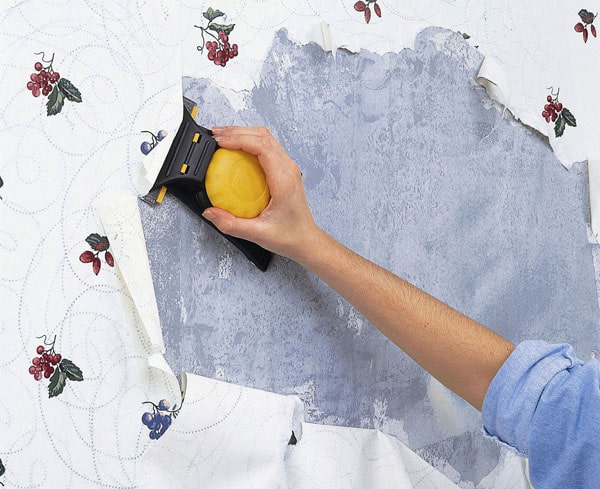
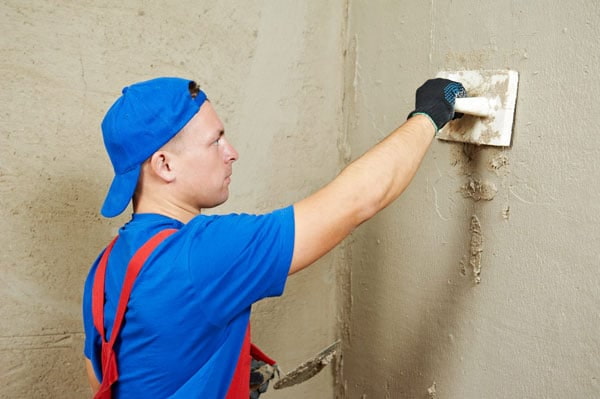
Video instructions for preparing walls
DIY step-by-step instructions for gluing
There should be no draft in the room during and after work. Do not glue the wallpaper while the air conditioner or fan is running. The optimum air temperature in the room is within 22-25 degrees. The gluing process itself depends on the type of photo wallpaper.
One canvas
When choosing seamless photo wallpaper, it is good when the dimensions of the canvas fit into the area of the wall with an accuracy of a centimeter. If the picture is smaller than the wall area, you need to place it in the center so that there is the same distance from the edges to the floor, ceiling and corners.
It is difficult to glue solid wall murals on your own; you will need at least one person who will help hold and smooth the canvas.
The gluing process
- Dismantle sockets, switches and other protruding elements.
- Apply adhesive to the wall 2-2.5 meters forward.
- Apply the wallpaper firmly, gradually smoothing it out.
- Fix the canvas from below and above with special slats - this will prevent deformation of the picture.
- Spread the second section of the wall with glue.
- When applying the canvas, control the position of the picture to avoid skewing.
- Continue glueing the canvas in a similar way. When pasting the entire room with one sheet, carefully perform the joint.
- Cut off the remaining wallpaper with a clerical knife.
- Cut openings for sockets and switches, door openings and window openings.
- Remove the fixing strips after a day.
Video instructions
Cut wall murals
This type of photo wallpaper is available in several versions. The drawing can have 4, 6, 8, 9, 12 and 16 parts. The more fragments, the more difficult it is to glue the canvas, because you should get an ideal joining of the parts of the drawing.
How to glue cut wallpaper?
- Lay out the sheets on the floor like a puzzle so that the diagram of the drawing becomes clear.
- Number each segment, put them in a pile and remove.
- Start marking the wall, starting from the window. Using a level, pencil and long ruler, draw a spot for the first line. Ideally, you should get straight vertical lines. Mark places for other parts in the same way. The borders of the markup must match the size of the future canvas.
- Trim the white margins around the edges of the sheets.
- Spread on the first sheet. It is not necessary to impregnate, it is better to glue it immediately.
- Attach the sheet to the wall so that it fits clearly into the marked part of the wall. If there is a strip of stock on the canvas, glue overlapping. Then walk with a clerical knife in the middle of the strip, saturate the joints with glue, smooth the edges.
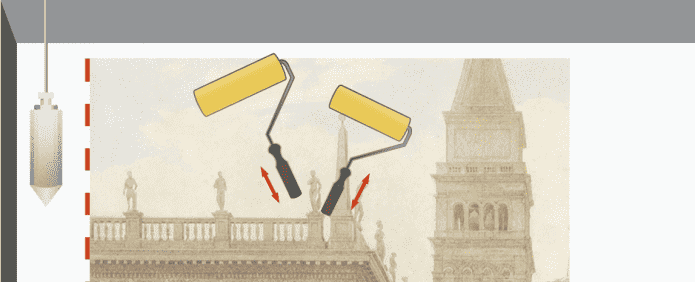
- In a similar way, you need to glue the rest of the sheets. Remove excess wallpaper from the top and bottom with a knife and a sharp spatula.
Photowall-paper gluing scheme
Video instructions
Self-adhesive wallpaper
Despite the name, the technique of gluing such wallpapers is complex. It is better to glue together, otherwise there is a big risk of ruining the canvas. The canvas itself consists of a sheet on which a backing is attached from below. It protects the adhesive side from drying out.
Step-by-step instruction
- Gradually removing the backing, glue the sheet in accordance with the markings.
- You need to get to the marked place right away - the wallpaper has the property of instantly sticking, correction is impossible.
- Make sure that the sticky parts of the sheet do not come into contact with each other, otherwise it will be damaged.
- If bubbles have formed, you can pierce them with a needle or razor and smooth them out.
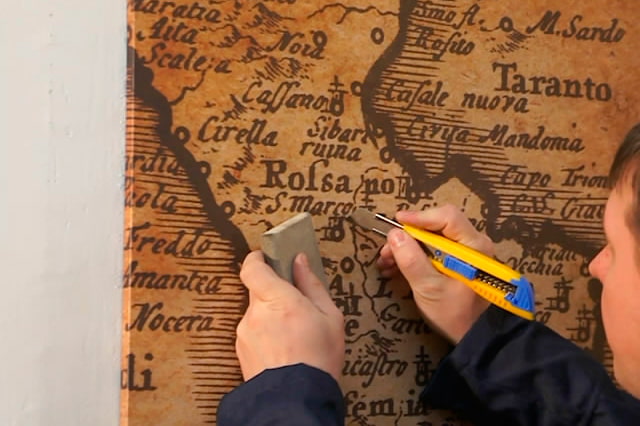
Features of pasting the ceiling
Before work, you need to prepare the ceiling. If it is uneven, preliminary finishing (plastering) is required. Ceiling wall murals consist mainly of squares and are glued according to the principle of a puzzle.
Algorithm for pasting the ceiling
- Spread the sheets on the floor, number them to avoid confusion.
- Trim the white margins around the edges.
- Mark the ceiling - each marked square must be the same size as the wallpaper.
- Smear the ceiling and glue the squares in order.
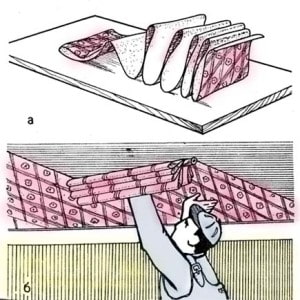
The nuances of pasting the door
Before pasting it is necessary to prepare the work surface.The door must be degreased, cleaned, handles and other protruding elements removed (if any).
It is recommended to use self-adhesive photo wallpaper, but in the absence of those, any that sit on the glue will go.
The nuances of pasting the door:
- If you are using cut wallpaper, you can get by with one sheet.
- Solid wall murals must be cut to the size of the door, taking into account the bend.
- It happens that the composition consists of several sheets. Here you must first try on the pieces, mark the door and start pasting.
- Begin to glue the self-adhesive wallpaper from the top.
- When gluing ordinary sheets, apply glue to the door, press the wallpaper firmly, and smooth it.
- Cut off the excess with a clerical knife.
- At the end of the work, return the door fittings to their place.
Pasting photo wallpaper on the door (video)
Tips for beginners
In the absence of experience, there may be a fear of spoiling the material and doing empty work. There are several guidelines for beginners to help avoid common mistakes:
- People who do not have experience in pasting walls should not make a choice on self-adhesive photo wallpaper.
- During work, hands must be clean - any dirt is very noticeable and difficult to remove.
- The guarantee of successful pasting is the glue. Ideally, you should choose wallpaper and adhesive from the same manufacturer.
- Pre-finishing of the walls is mandatory (removal of the old coating, plaster, putty).
- Special attention should be paid give corners.
- After lubrication, the sheets should be glued immediately, not held.
- The overlap on the wallpaper should not exceed 2 mm.
- It is necessary to smooth the canvas from the center to the edges.
- Wall murals dry for a long time - it is not recommended to open windows in the room for 2-3 days after the end of pasting.
- And most importantly, the design of the canvas should harmoniously fit into the interior of the room.
Pasting walls with photo wallpaper seems difficult at first glance. But if you approach the process with the utmost responsibility, prepare inventory and materials, a positive result is guaranteed. There are also enough videos on the network in which the technique of gluing photowall-paper is described step by step.

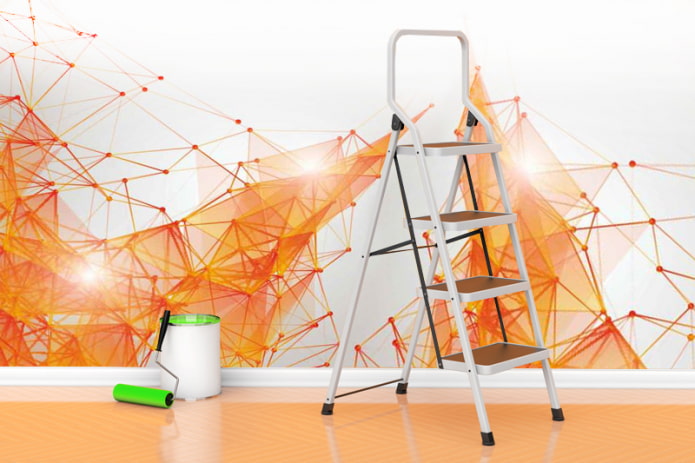
 10 practical tips for arranging a small kitchen in the country
10 practical tips for arranging a small kitchen in the country
 12 simple ideas for a small garden that will make it visually spacious
12 simple ideas for a small garden that will make it visually spacious
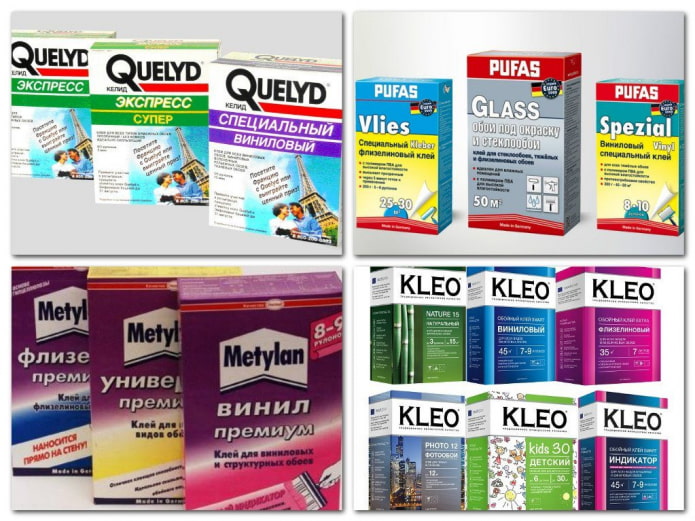
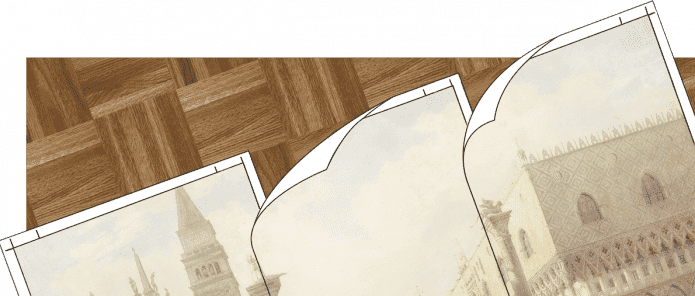

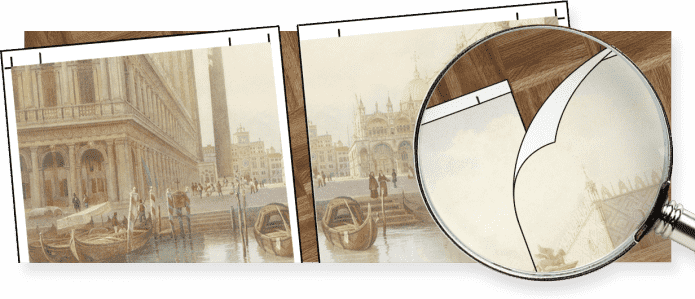


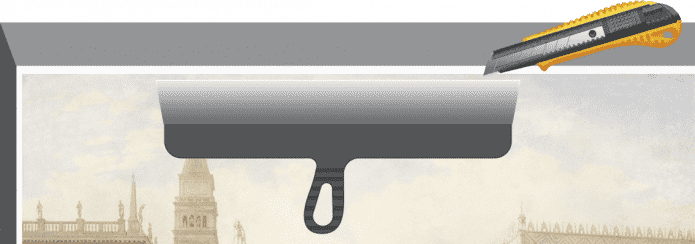
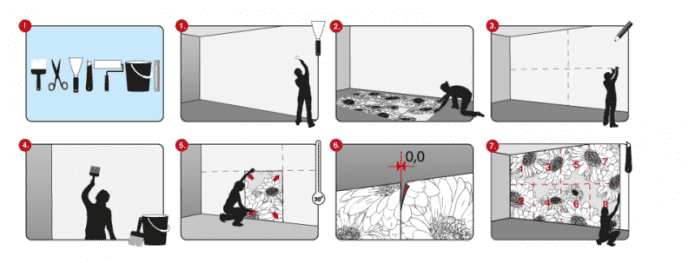
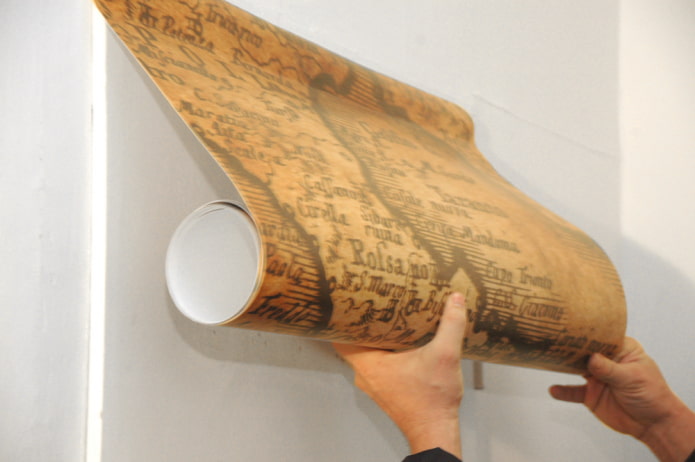

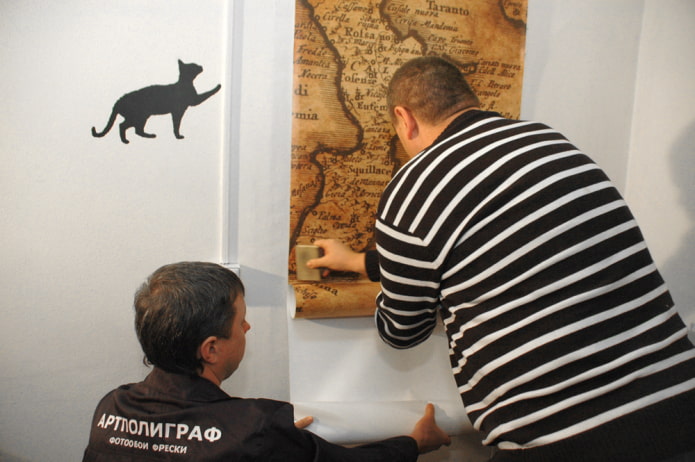
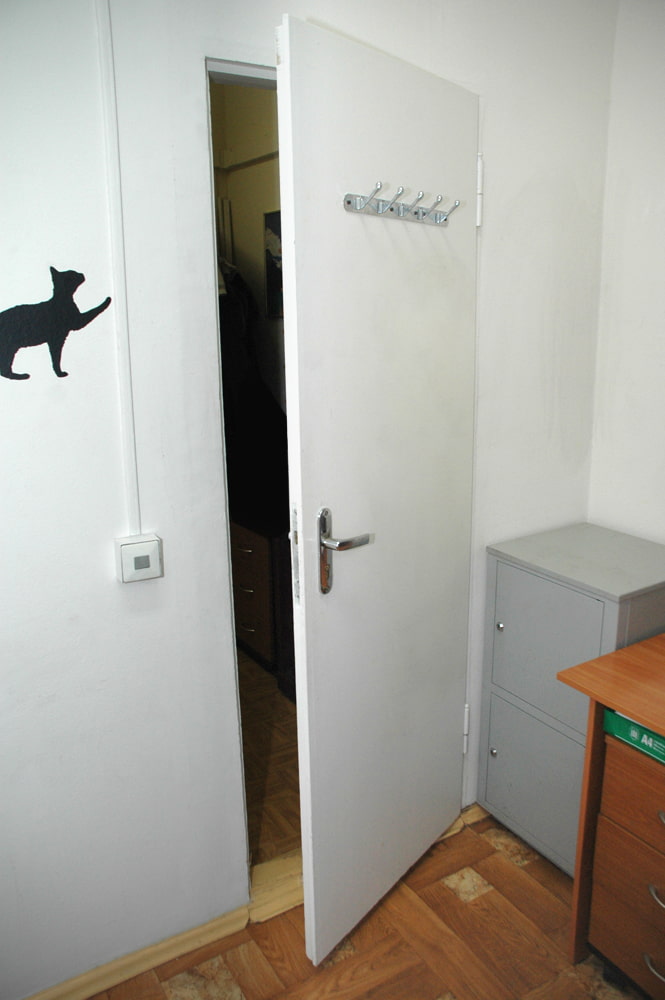
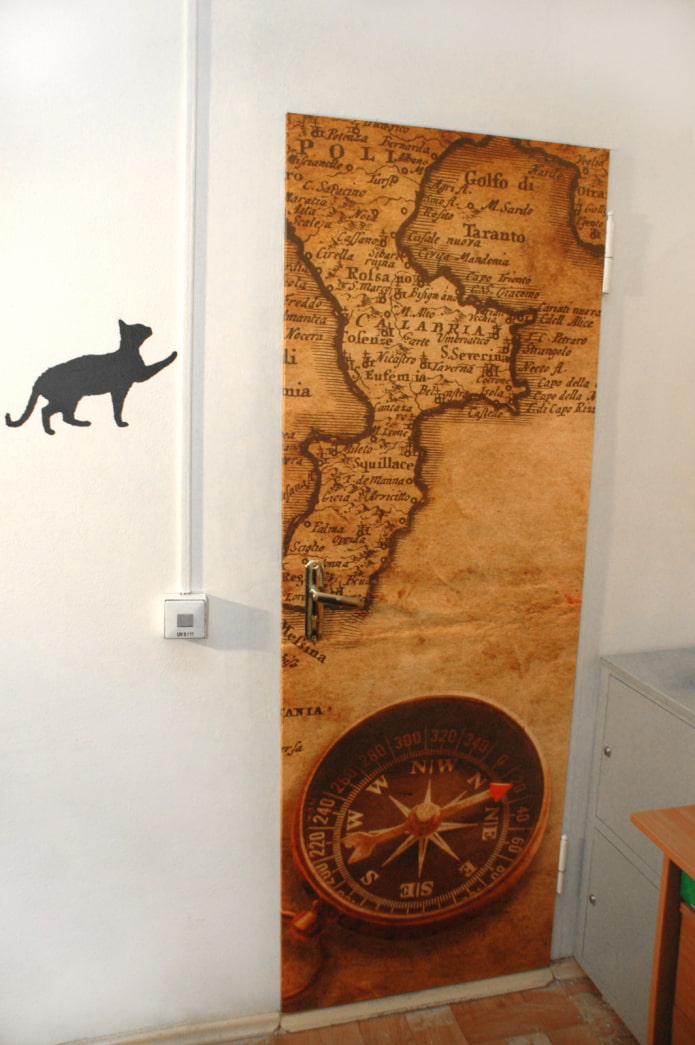
 What is better not to do it yourself during the repair?
What is better not to do it yourself during the repair? Bloated linoleum: how to fix it without disassembly
Bloated linoleum: how to fix it without disassembly The worst decisions in apartment renovation
The worst decisions in apartment renovation  Installation of ceiling tiles: choice of materials, preparation, order of work
Installation of ceiling tiles: choice of materials, preparation, order of work How to glue a ceiling plinth to a stretch ceiling?
How to glue a ceiling plinth to a stretch ceiling? Ceiling plinth for stretch ceiling: types, recommendations for selection
Ceiling plinth for stretch ceiling: types, recommendations for selection